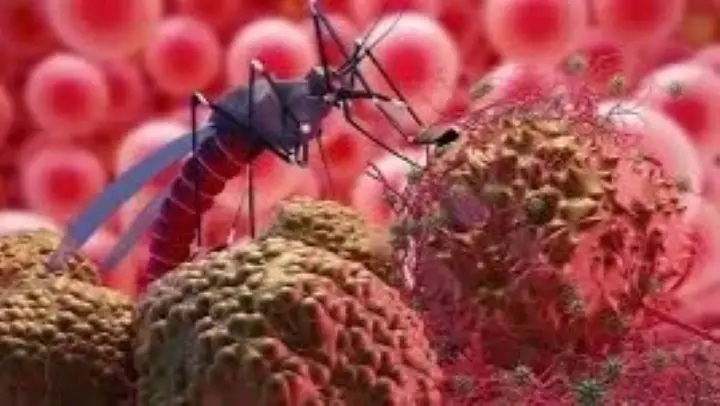Malaria fight in Tanzania: Why some regions still suffer

Malaria fight in Tanzania: Why some regions still suffer
Malaria remains a persistent public health challenge in Tanzania, affecting millions despite continuous efforts to reduce its prevalence. While the country has made remarkable strides in combating the disease, several regions still face high infection rates due to environmental, economic, and social factors. Understanding these challenges, government interventions, and the way forward is crucial in the fight to eliminate malaria by 2030.
The Burden of Malaria in Tanzania
Malaria is a major cause of illness and death in Tanzania, particularly among children under five. According to the World Health Organization (WHO), malaria prevalence in the country declined from 14% in 2015 to 8.1% in 2022. However, Tanzania remains one of the four African nations—alongside Nigeria, the Democratic Republic of the Congo, and Niger—accounting for over half of global malaria deaths.
Regional Disparities in Malaria Cases
While some regions like Arusha and Dar es Salaam have recorded significant reductions in malaria infections (as low as 1%), other areas continue to struggle. The Lake and Western zones have the highest prevalence, reaching up to 23%, with regions such as Tabora, Kagera, and Katavi being most affected. These variations are largely attributed to environmental factors, inadequate infrastructure, and limited access to prevention and treatment resources.
Challenges in Malaria Prevention and Treatment
Despite increased efforts, several barriers hinder malaria eradication in Tanzania:
1. Environmental and Climatic Factors
The presence of stagnant water bodies, poor drainage systems, and unpredictable climate changes create ideal breeding grounds for mosquitoes. In areas like Igunga District, abandoned water ponds serve as a significant source of malaria transmission.
2. Inconsistent Use of Treated Mosquito Nets
Although the government distributes free mosquito nets to vulnerable populations, improper use remains a challenge. Many people misuse the nets for other purposes, such as making fishing nets or covering livestock shelters, reducing their effectiveness in preventing mosquito bites.
3. Limited Access to Healthcare and Essential Medications
While malaria treatment is free for children under five, many hospitals frequently run out of essential medications, forcing families to purchase them at private pharmacies. Additionally, the cost of supplementary drugs, such as anti-nausea medications, adds to the financial burden on affected families.
4. Malaria Drug Resistance
Some individuals, like Josephat Kawambwa from Kagera, experience recurrent malaria episodes despite completing prescribed treatments. Inadequate adherence to medication guidelines and self-medication contribute to drug resistance, making treatment less effective over time.
Government Efforts and Achievements
The Tanzanian government has been proactive in malaria control, implementing various initiatives to reduce transmission rates. Some notable efforts include:
1. Distribution of Mosquito Nets and Insecticides
The government regularly distributes free insecticide-treated nets to school children and pregnant women. In Dar es Salaam, Ilala resident Mariam Salehe credits these efforts for significantly reducing malaria cases in the city.
2. Investments in Larvicides and Spraying Programs
In the 2024/2025 fiscal year, the government allocated TZS 10 billion for the purchase of larvicides and TZS 1 billion for spraying equipment. These efforts target high-prevalence areas such as Tabora and Kagera, aiming to eliminate mosquito breeding sites.
3. Strengthening Local Malaria Control Industries
The government is also promoting local production of malaria control products, such as larvicides produced at Tanzania Biotech Products Limited in Kibaha. This initiative enhances self-reliance and ensures a sustainable supply of essential prevention tools.
4. Public Awareness Campaigns
Community education is vital in malaria prevention. Government-led campaigns focus on promoting proper net usage, early testing, and adherence to prescribed treatments. By educating citizens, malaria transmission can be significantly reduced.
The Road to Malaria Elimination by 2030
While Tanzania has made commendable progress, eliminating malaria by 2030 requires sustained efforts and innovative approaches. Key strategies include:
- Expanding Malaria Vaccination Programs: Introducing malaria vaccines as part of routine immunization can provide long-term protection, especially for children.
- Enhancing Surveillance and Rapid Response: Using data-driven approaches to detect and respond to outbreaks promptly can help control the spread of malaria.
- Improving Sanitation and Drainage Infrastructure: Eliminating mosquito breeding sites through better drainage systems and waste management will further reduce transmission rates.
- Strengthening Community Involvement: Encouraging local participation in malaria control programs ensures sustainability and long-term impact.
Conclusion
Malaria remains a serious health challenge in Tanzania, but the country’s dedicated efforts have led to notable progress. By addressing key challenges, reinforcing prevention strategies, and fostering public participation, Tanzania is on the right path toward achieving its malaria elimination goal. Continued investment in research, technology, and healthcare infrastructure will be crucial in securing a malaria-free future for all.
MORE NEWS:



